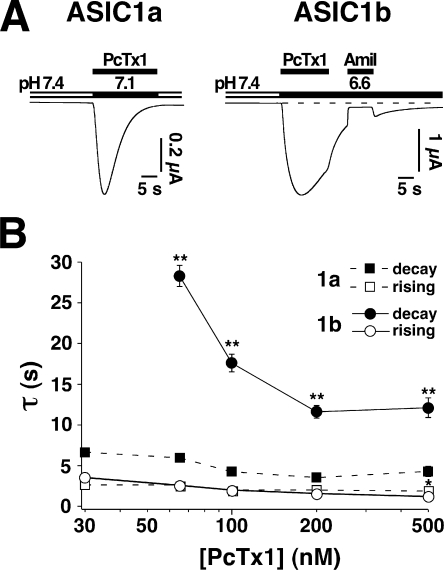Figure 6.
PcTx1 opens ASIC1b more persistently than ASIC1a. (A) When coapplied with pH 7.1, 100 nM PcTx1 induced relatively transient ASIC1a currents (left, n = 7). ASIC1b currents that were induced under comparable conditions were of greater relative amplitude and decayed more slowly. They could be blocked by 100 μM amiloride (right, n = 6). (B) Diagram showing the dependence on the PcTx1 concentration of the time constant describing the rising and the decay phase of the PcTx1-elicited currents, determined in the continuous presence of PcTx1 (n = 4–11 for ASIC1a; n = 4–12 for ASIC1b). The time constants of the rising phase were similar for ASIC1a and ASIC1b currents, while for the decay phase, they were significantly different. For ASIC1b, the decay time constant initially decreased with increasing concentrations of PcTx1 but remained constant around 12 s for high concentrations of PcTx1. Part of the data for ASIC1a have already been published (Chen et al., 2005). **, P < 0.01.

